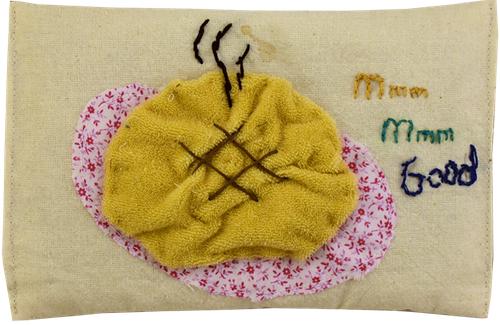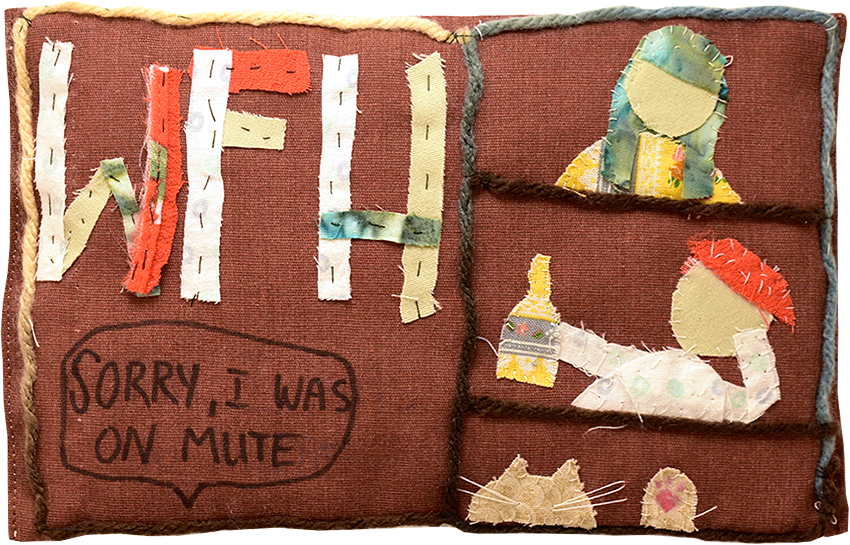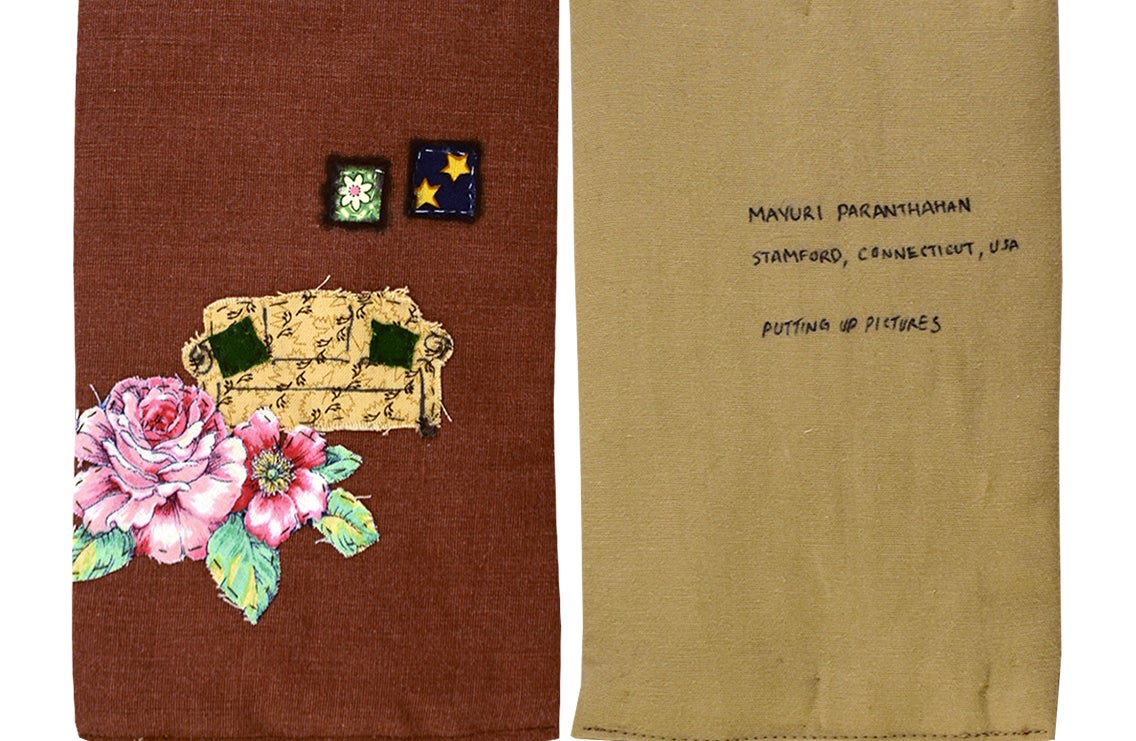
A stitch in time
Grad project pieces together pandemic experiences

Grad project pieces together pandemic experiences
By Carol Truemner Faculty of EngineeringIt was the COVID-19 messages and symbols Brenda Reid saw throughout her Kitchener neighbourhood a year ago that inspired her community-quilt project for people to share virus stories.
The Waterloo architecture master’s candidate, who was researching the topic of care in architecture for her thesis when the pandemic struck in March 2020, created the From Behind the Mask initiative for people living in Kitchener, Waterloo and Cambridge.
“What caught my attention on my neighborhood walks were the ways people used space to communicate with each other — from sidewalk chalk to ribbons on trees to signs on lawns,” Reid says. “I wanted to capture individuals’ COVID experiences in a permanent way.”
ribbons on trees to signs on lawns,” Reid says. “I wanted to capture individuals’ COVID experiences in a permanent way.”
Architecture grad student Brenda Reid ties quilt blocks together. Photo courtesy of Erik O'Neil.
Since launching From Behind the Mask in October 2020, Reid has distributed 1,500 quilt-block kits she assembled with the help of volunteers. So far, she has received over 400 completed designs on pieces of fabric resembling face masks with more expected before the April 30 deadline.
When she started her project, Reid, a graduate of Waterloo’s undergraduate architecture program, was conscious that people were having very different experiences in the pandemic.
“What I received back was really that,” she says. “I surprised even myself with the variety and the subject matter of the blocks. Everyone’s story is important and valuable and that’s what this quilt is really about.”






Six of the over 400 blocks submitted for the community quilt.
Individuals from three to 89 years old have submitted blocks in at least four different languages using a wide variety of mediums from traditional types of fabric to paint, crayon, yarn and beads. Most have the contributor’s name and a description of the block’s meaning on the reverse side.
Schools across Waterloo Region have been involved in the project with many using From Behind the Mask as a classroom art project.
Some of the blocks returned to Reid highlight specific activities including making sourdough bread, a popular pastime particularly at the beginning of the pandemic, responding to widespread shortages of yeast. A piece of yellow towel was used for the loaf with the embroidered words Mmm, Mmm Good beside it.
Good beside it.
A message board promotes the project.
Another features three deaths and three births that all took place in 2020.
“It sort of talks about the cycle of life — that’s a lot of loss and a lot of new life in such a short period of time,” Reid says.
A 14-year-old designed their block into a fabric storybook.
“It tells a story about how they have really begun to enjoy reading during the pandemic and that it has become their source of entertainment,” she says. “They listed a whole bunch of books that they’ve read. I thought that was so cool.”
Currently, a team of volunteers from Kitchener’s Volunteer Action Centre and elsewhere are assembling the blocks, which will then be tied into the quilt. The finished work of art will be on display from May 21 to August 29 at the Homer Watson House & Gallery located on Old Mill Road in Kitchener.
“We’ll work out ways to film or photograph it so people who don’t get to see it in person will be able to see it online,” says Reid. “The hope is that the quilt will be set up in different locations throughout the tri-cities before being finding a permanent home in the area.”
Within her community project, Reid also invited School of Architecture students, faculty and staff members to participate with stories tied back to the site of the school.
the site of the school.
With most students away from the school’s Cambridge campus for over a year, she felt they also needed a way to express their pandemic thoughts and feelings.
Patches were contributed by students learning remotely in Vancouver, Edmonton, Connecticut and throughout Ontario.
Quilt blocks submitted by the School of Architecture community.
The 18 on display in a window of the Design at Riverside Gallery include one Reid produced.
Describing her block as a bit chaotic, Reid says its different knots, textures and colours symbolize both her anxious and beautiful moments over the past year.
“I really enjoyed creating it. I spent a lot of time on it when I was working on my thesis document,” she says, adding with a laugh, “it gave me a chance to keep myself off the computer for a bit.”

Read more
Here are the people and events behind some of this year’s most compelling Waterloo stories

Read more
A winter holiday message from President Vivek Goel

Read more
The Waterloo community comes together to remember, reflect and respond to gender-based violence
The University of Waterloo acknowledges that much of our work takes place on the traditional territory of the Neutral, Anishinaabeg, and Haudenosaunee peoples. Our main campus is situated on the Haldimand Tract, the land granted to the Six Nations that includes six miles on each side of the Grand River. Our active work toward reconciliation takes place across our campuses through research, learning, teaching, and community building, and is co-ordinated within the Office of Indigenous Relations.